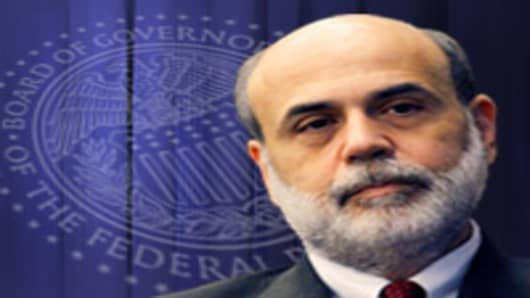Federal Reserve Chairman Ben Bernanke called on the government Thursday to ramp up efforts to stem soaring home foreclosures, which are feeding into the country's deep economic troubles.
Although a flurry of actions have been taken to ease the housing crisis, foreclosures still remain "too high" with adverse consequences for struggling homeowners, squeezed lenders and the broader economy, Bernanke said in remarks to a Fed conference here on housing finance.
"More needs to be done," he declared.
Lenders appear to be on track to initiate 2.25 million foreclosures this year, up from an average annual pace of less than 1 million during the pre-crisis period, he said.
To provide additional relief, Bernanke outlined a number of what he called "promising options" to reduce preventable foreclosures.
Under one plan, Bernanke called on Congress to ease the terms of a government program called "Hope for Homeowners," which lets distressed homeowners refinance into more affordable, federally insured mortgages if the lender writes down the amount owed on the mortgage and pays an upfront insurance premium.
Bernanke suggested Congress lower lender's upfront insurance premium as well as reducing the interest rate borrowers pay, which presently is quite high, roughly 8 percent.
More From CNBC.com
- Pros Say: More Retailers May Go Under
- Oil May Fall to $20, Stagflation Coming
- Strategist: Time to Play Fundamentals
- Pimco's Gross: Stocks Are Good for Long Run
To bring down this interest rate, Treasury could buy Ginnie Mae securities, which fund the mortgage program, or Congress could decide to subsidize the rate.
Another option would ease the terms of a loan-modification plan put forward by the Federal Deposit Insurance Corp. that seeks to make monthly mortgage payments more affordable.
The FDIC put this plan into effect at IndyMac Bank, a large savings and loan that failed earlier this year, and has used it to modify mortgages at other financial institutions.
Under the so-called IndyMac plan, struggling home borrowers pay interest rates of about 3 percent for five years.
Rates are reduced so that borrowers aren't paying more than 38 percent of their pretax income on housing.
Bernanke suggested this threshold could be lowered to perhaps 31 percent of income, with the government sharing some of the cost.
Yet another option would have the government purchase delinquent or at-risk mortgages in bulk and then refinance them into the "Hope for Homeowners" or another government program that insures home mortgages.
Other options include a broader push for lenders to forgive a portion of the home loan for certain borrowers, and other permanent modifications over the longer term so that people don't fall back into distress again.
The housing crisis has driven up foreclosures and forced financial companies to take massive losses on soured mortgage investments.
The housing debacle touched off the worst financial crisis since the 1930s that Bernanke and Treasury Secretary Henry Paulson have been desperately trying to bring under control.
All the fallout has plunged the country into a painful recession.
Bernanke stressed the importance of curbing the foreclosure mess because it is so inter-linked with the economy's health.
"Weakness in the housing market has proved a serious drag on overall economic activity," he said. "Steps that stabilize the housing market will help stabilize the economy as well."
Fielding questions after his speech, Bernanke didn't foresee government intervention specifically aimed at boosting sagging home prices.
"I don't think we would be either willing or able to target house prices. I think that would probably be an impossible thing to do given the size of the national housing market," Bernanke said.
Instead, the government can take steps to improve the functioning of the mortgage market, which would allow more people to secure home loans and help stabilize the housing market, he said.
The Fed chief's remarks come as the Treasury Department weighs new plans to revive the moribund housing market.
Under one plan, Treasury would seek to lower the rate on a 30-year mortgages to 4.5 percent by purchasing mortgage-backed securities from Fannie Mae and Freddie Mac, according to financial industry officials.
It's unclear exactly how much the plan would cost.
It is possible that Paulson will ask Congress for the second $350 billion installment of the $700 billion financial bailout package to bankroll the effort.
Paulson and his colleagues within the Bush administration have come under fire by Democrats and some Republicans for not doing enough to help Americans at risk of losing their homes.
President-elect Barack Obama signaled a desire Wednesday to use a significant portion of the $700 billion pot to stanch foreclosures.
"The deteriorating assets in the financial markets are rooted in the deterioration of people being able to pay their mortgages and stay in their homes," he said.
Paulson has been opposed to tapping the bailout pool to fund a mortgage-relief program championed by FDIC chief Sheila Bair.
The $24 billion FDIC plan would use some of the rescue money to help back refinanced mortgages that would lower monthly payments.



